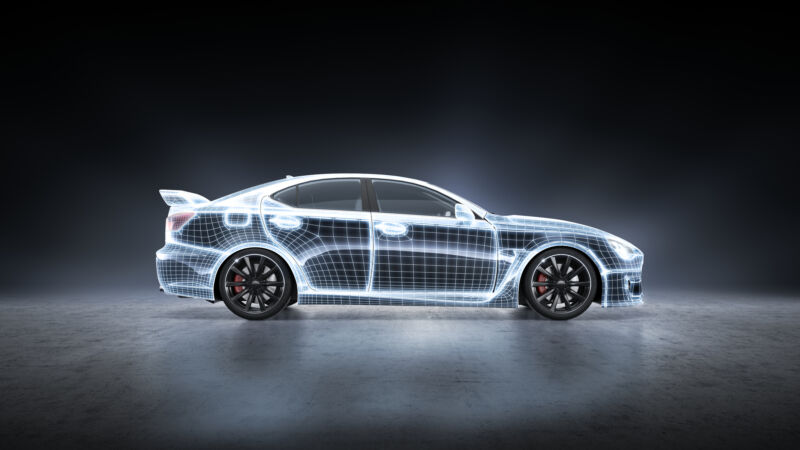
Carmakers want to ditch battery packs, use auto bodies for energy storage
There’s a renaissance underway in structural battery research. …
 reader comments
reader comments
209 with 96 posters participating
Elon Musk made a lot of promises during Tesla’s Battery Day last September. Soon, he said, the company would have a car that runs on batteries with pure silicon anodes to boost their performance and reduced cobalt in the cathodes to lower their price. Its battery pack will be integrated into the chassis so that it provides mechanical support in addition to energy, a design that Musk claimed will reduce the car’s weight by 10 percent and improve its mileage by even more. He hailed Tesla’s structural battery as a “revolution” in engineering—but for some battery researchers, Musk’s future looked a lot like the past.
“He’s essentially doing something that we did 10 years ago,” says Emile Greenhalgh, a materials scientist at Imperial College London and the engineering chair in emerging technologies at the Royal Academy. He’s one of the world’s leading experts on structural batteries, an approach to energy storage that erases the boundary between the battery and the object it powers. “What we’re doing is going beyond what Elon Musk has been talking about,” Greenhalgh says. “There are no embedded batteries. The material itself is the energy storage device.”
 Today, batteries account for a substantial portion of the size and weight of most electronics. A smartphone is mostly a lithium-ion cell with some processors stuffed around it. Drones are limited in size by the batteries they can carry. And about a third of the weight of an electric vehicle is its battery pack. One way to address this issue is by building conventional batteries into the
Today, batteries account for a substantial portion of the size and weight of most electronics. A smartphone is mostly a lithium-ion cell with some processors stuffed around it. Drones are limited in size by the batteries they can carry. And about a third of the weight of an electric vehicle is its battery pack. One way to address this issue is by building conventional batteries into the
Continue reading – Article source




